Cooking for someone you care about, especially when it includes the complex craft of sushi preparation, has a natural sense of intimacy and specialness. Picture this: the table is prepared, the candles are lit, and a platter with a variety of well prepared sushi, a display of your culinary prowess, sits in the middle. This is more than simply supper; it’s a journey and an experience that takes you to a place where artistry and love come together at the dinner table. Don’t worry if the idea of making your own sushi supper from scratch has ever intimidated you. With a little help, you can turn your eating area into the most upscale sushi bar in town—perfect for two people.
To make sushi at home, you’ll need a few essential tools for making sushi:
- Bamboo rolling mat (makisu)
- Plastic wrap
- Sharp knife
Then, you could prepare any of your favorite fish or vegetables.
The cornerstone of any good sushi starts with the rice.
With its distinct stickiness and flavor, sushi rice functions as the perfect canvas for your culinary creations. Locating sushi rice is vital, normally purchased at your local grocery shop or an Asian market. If sushi rice remains elusive, don’t despair. Another short-grain rice type, such as Calrose, can be an acceptable option. Preparing the rice is crucial; it sets the stage for the entire meal. Following a trusted sushi rice recipe will ensure that your foundation is firm.
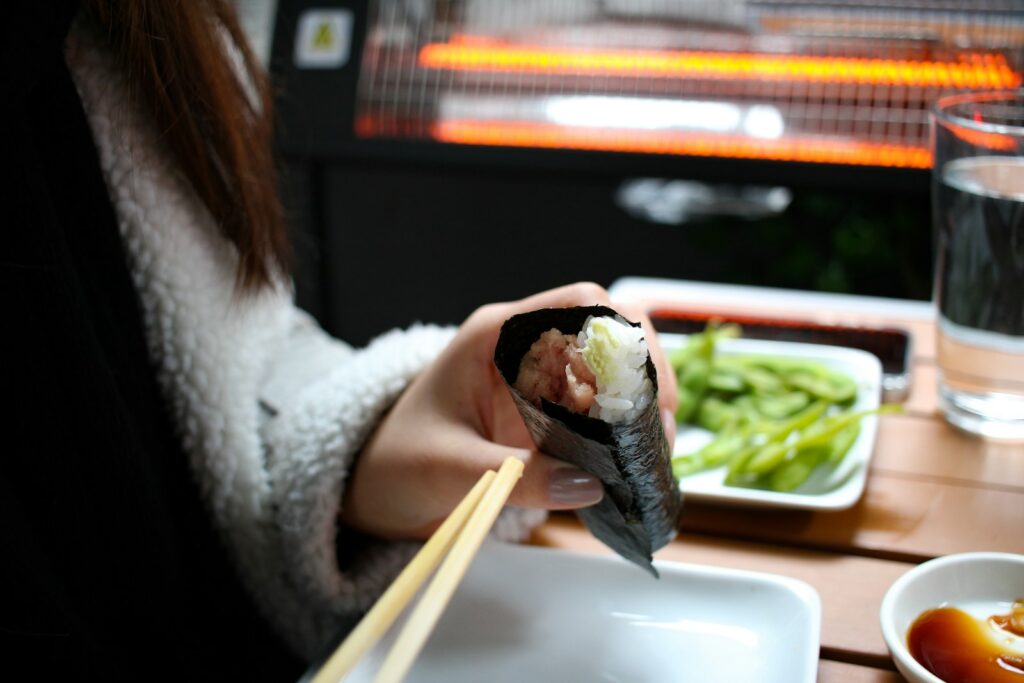
Nori, the seaweed that wraps around the bit of rice and fish, comes next on the ingredient list.
Sold in sheets in most supermarket stores, nori delivers the ocean’s aroma to each bite. For those who take delight in the details, cutting the nori into little strips with a sharp knife or kitchen shears can be a contemplative exercise, preparing you for the beautiful construction to come.
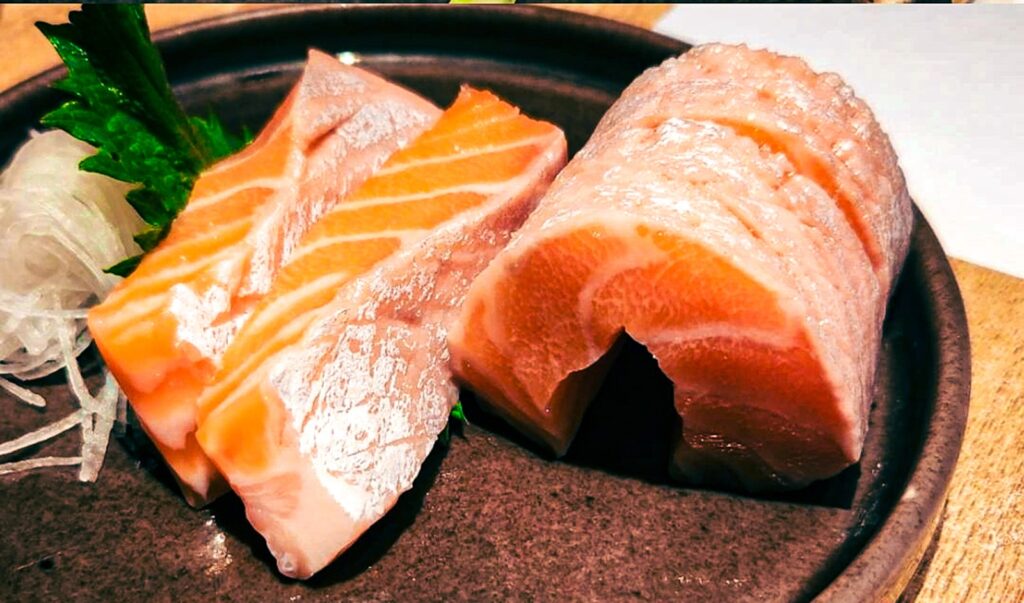
The stars of the show are, without doubt, the toppings.
A selection of sashimi-grade salmon and tuna, balanced by the creamy texture of avocado and the crispness of cucumber, provides a symphony of flavors and textures. The beauty of sushi is in its versatility. Whether you’re a fan of the classics or looking to experiment, the toppings allow creativity. Sesame seeds offer a nutty texture, while the spicy mayo—a simple yet transforming blend of mayonnaise and sriracha—drizzles over the top, adding a kick that dances on the tongue.
Garnishes are not to be disregarded.
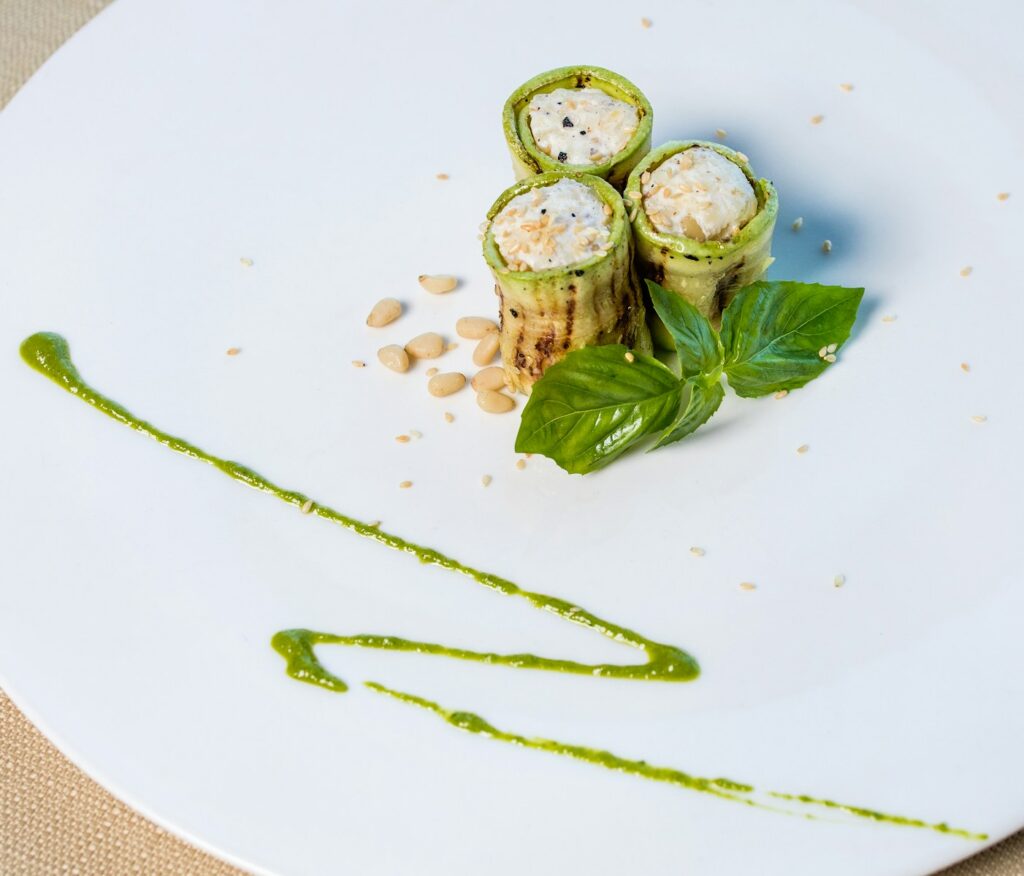
The acidic sweetness of pickled ginger cleanses the tongue between bites, while wasabi provides a spicy depth. These components, commonly found at the sushi counter at local grocery shops, are vital in bringing the sushi bowl to life. As you create your sushi bowls, remember that each piece, from the rice to the garnish, plays a key role in making the perfect bite.
Elevate sushi-making with expert tips and inventiveness.
Mastering the art of sushi is about precision and technique, experimentation, and putting your distinctive touch to every meal.
Remember the importance of excellent components. Sushi-grade seafood is non-negotiable for your sushi bowls. Freshness is vital, so obtaining your fish from reputable seafood counters or Asian stores offering sashimi-grade selections is crucial. If you’re unsure about the freshness, don’t hesitate to inquire. Often, the sushi counter at grocery stores can also give you with fantastic cuts of fish that are suitable for your sushi ambitions.
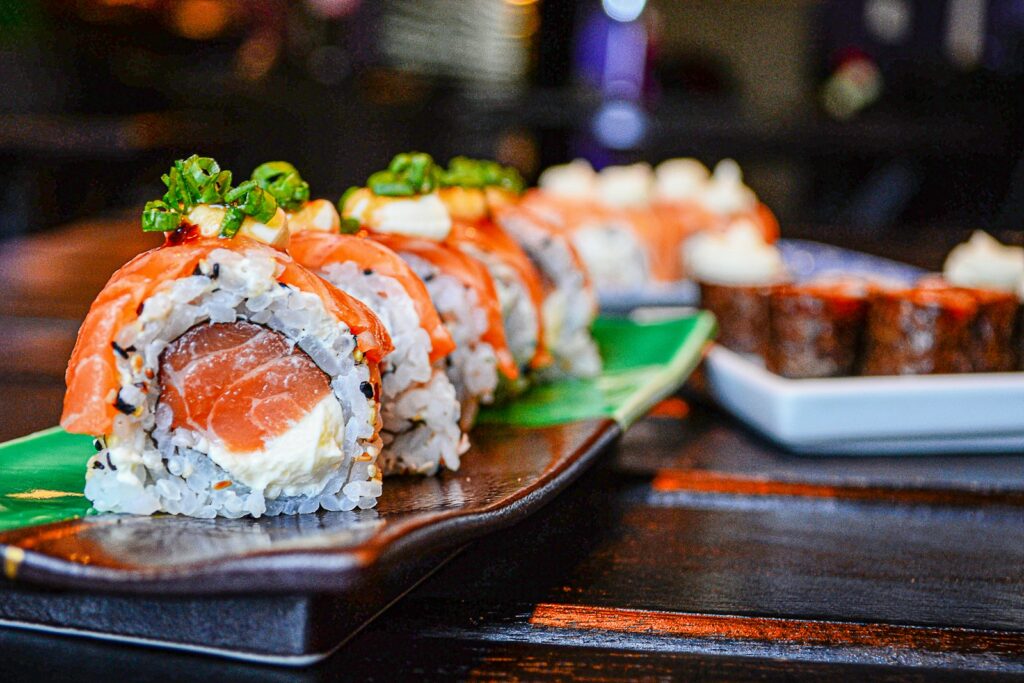
When it comes to slicing your fish, sharpness is key. A dull knife might harm the delicate texture of the fish, detracting from the whole experience. Invest in a good-quality, sharp knife and take the time to learn the technique of slicing fish. It’s not just about cutting; it’s about honoring the ingredients. Each slice should be smooth and effortless, accentuating the fish’s natural flavors and textures.
Play with flavors and textures. Though salmon and tuna have great toppings, why not explore the varied universe of seafood? Experiment with scallops, yellowtail, or even octopus. Each type of seafood delivers a unique taste and texture, adding an exciting layer to your sushi bowls. Remember the various sushi supper stated in the context? It includes unusual selections including otoro, hotate, and kanpachi. These are not simply names but gateways to innumerable flavors ready to be explored.
Embrace the diversity of vegetables. Cucumbers and avocado are classics, but there’s a whole garden of alternatives. Think about adding thin slices of radish for a spicy crunch or shreds of carrot for a dash of color and sweetness. Vegetables are not simply fillers; they’re an opportunity to add freshness, crunch, and contrast to your sushi.
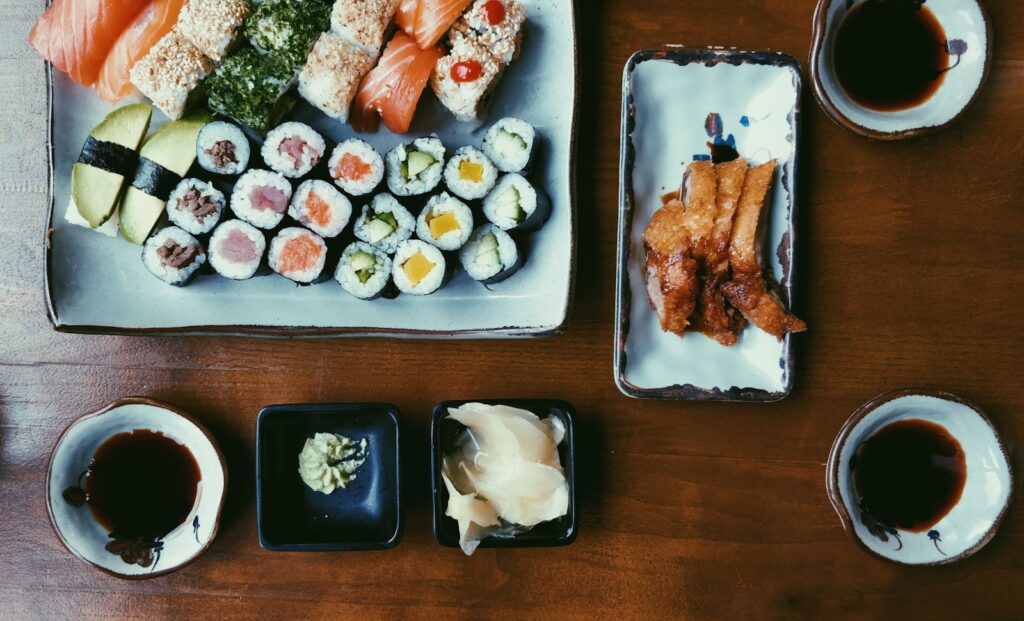
Let’s chat about the sauce. Spicy mayo is a favored choice for many, but have you investigated other options? A spray of ponzu can lend a lemony brightness, while a dash of eel sauce introduces a sweet and savory depth. The objective is to compliment the fish without dominating its inherent taste. And if you’re feeling creative, why not develop your sauce? Mix and match ingredients like soy sauce, sesame oil, rice vinegar, and a hint of honey for a bespoke sauce that’s distinctively yours.
With the various ingredients selected, it’s time to start trying your hand at it.
- Place the bamboo rolling mat (you can get an inexpensive one online) on a cutting board so the bamboo strips are running horizontally to you. Spread a strip of plastic wrap over the bamboo mat. Then place a sheet (or a half sheet) of nori on the plastic wrap.
- Spread a thin layer of sushi rice over the nori.
- Add your ingredients toward the center of the rice-covered nori. Gently lift the bottom of the mat up and over the sushi. Press and shape the ingredients into a tube. Roll with pressure so you get a firm roll.
- Roll until just an inch of nori shows at the top. Seal the edge of the nori with a little cold water. Firm it up by squeezing the mat around the roll until it feels uniformly snug.
- Slice the sushi roll in half with a sharp knife on a cutting board. Then cut each half into thirds — so you have 6 pieces of sushi. To get a nice clean cut, wet the knife with water each time you make a slice.
The recipe was derived from: https://www.allrecipes.com/article/how-to-make-sushi-rolls/
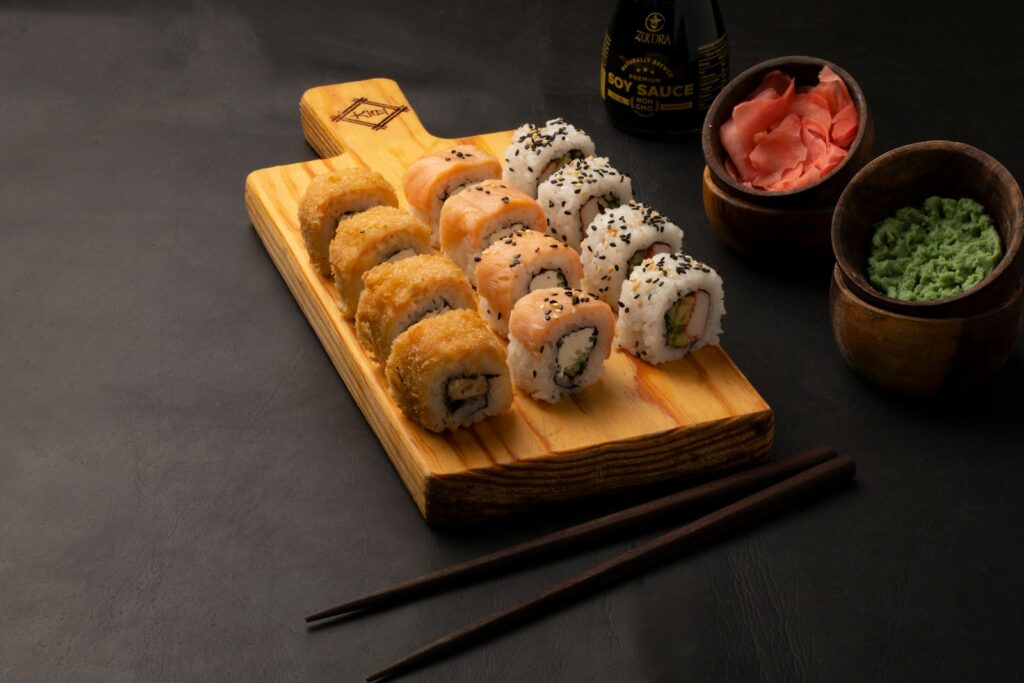
Presentation is part of the experience. Take a time to think about how you arrange your sushi bowls. Play with colors, shapes, and textures. A well presented food looks enticing and enriches the whole dining experience. Use garnishes not merely for taste but as part of the visual appeal. A sprinkle of sesame seeds, a few strands of green onion, or even a flower formed out of radish may take a dish from simple to outstanding.
The key to a good sushi supper is to have fun with it. The beauty of homemade sushi is that there are no fixed regulations. It’s your canvas to paint on. Experiment with different combinations, try new techniques, and, most importantly, enjoy the process. Your love and enthusiasm for the art of sushi will shine through in every mouthful, creating not just a dinner but an unforgettable experience.
Related posts:
Sushi Bowl Recipe



